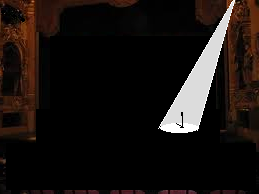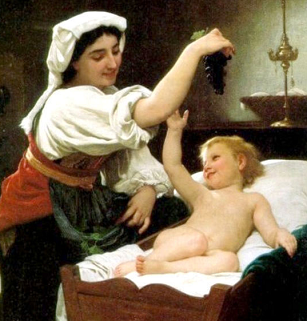The Kuriki method (the first edition in 2007) is a theory about Tourette’s syndrome (tic disorder) and obsessive-compulsive disorder to cure these diseases without medication. This theory is based on the author’s inference and interpretation regarding the structure of these diseases. Since it has been written for the psychoanalysts, reading will be difficult for people in general and it might be sometimes read erroneously. Therefore the Kuriki method must presuppose that the patient is treated by a nearby psychoanalyst, and that, between the patient and the Kuriki method, there is always the psychoanalyst. The explosion of emotional catharsis, which has strong repercussions, is done only for three seconds, once a week: beyond this rhythm, it would be an accident caused by negligence, and the psychoanalyst who is inexperienced in emotional catharsis must take responsibility for the temporary mental collapse caused by the accident. Also, to the patient who has weak capacity of logical reasoning, the psychoanalyst must explain well on the violent emotion of revenge caused by the illusory confusion between the person of the traumatic image in his head and the person in the real world.
Cure for Tourette’s syndrome (tic disorder) and OCD without medication
§03

Intentionality of the Conscious. (Amplification of compulsivity)
In a theater, after all the lighting of the hall has been turned off, the attention of the audience is directed towards the place that the spotlight illuminates on the scene. The audience will watch nowhere else. The things (objects) that the audience watches are determined by the spotlight, and consequently, the things that the audience does not watch are also determined by this spotlight. If there is a thing that should not be watched by the audience, another thing will be chosen at random and illuminated by the spotlight.
The symptoms of neurosis are always bodily symptoms; a bodily mechanism of repression that makes randomly a thing an object of the Conscious to prevent something disagreeable becoming an object of the Conscious. The spotlight of the Unconscious chooses randomly another object of the Conscious.
To avoid looking at something, you have to look at this thing to avoid it: it’s a paradox. The existence of the Unconscious is a therapeutic hypothesis that can schematize this mental phenomenon, in the form in which the Unconscious does not show to the Conscious the thing that the Unconscious does not want to show to the Conscious. The thing that the Unconscious does not want to show to the Conscious is always visible in the Unconscious. Another object is put in the center of the Conscious and attracts attention. Another object has priority in the Conscious.
When a baby is crying, you show him a doll, which you have to keep shaking. The mechanism that diverts the Conscious of the baby from a disagreeable bodily sensation to another arbitrary object. Neurosis is repression by the same mechanism.
The theory of the Kuriki method develops as considering neurosis as a pathological mechanism of repression. If you think this structure of repression in the Kuriki method is not normal, you must understand that therefore this structure is abnormal and pathological.
Disagreeable
When repression is the question, this adjective “disagreeable” must be used differently than usual, because this word means the feeling that is actually felt in the Conscious. Otherwise phrases become contradictory, such as; “With repression, the child does not feel disagreeable things as disagreeable”, etc. Thus, in some contexts of the method Kuriki, the adjective “disagreeable” means; “If there were no repression, the judgment would be expressed as negative emotion in the Conscious”. Libidinal disagreeable judgment of neurosis does not have line of demarcation between physical disagreeable judgment and mental disagreeable judgment.
Healthy disagreeable emotion
1. Event (repeated every day)
↓
2. Disagreeable judgment in the Conscious
↓
3. Disagreeable Emotion in Consciousness
↓
4. External expression of this disagreeable emotion
Pathological repression
1. Event (repeated every day)
↓
2. Blocking of the disagreeable judgment by the Unconscious
↓
3. Agreeable Feeling in Consciousness
↓
4. External expression of this agreeable feeling
Lack of conceptualization
The object of repression is not a traumatic event, but the expression of a disagreeable judgment in the Conscious (disagreeable emotion). Often a little child does not know how to conceptualize a disagreeable judgment. Under repression, a disagreeable intuitive judgment does not have expression in the Conscious. The repression is the repression of emotion. It is possible that there are little children who do not know “rejection in the Conscious”. Unless someone tells him with words that it is something very disagreeable, there is a possibility that the small child, who is a little bit Asperger, cannot have disagreeable emotion strong enough in the Conscious. Even though he has a disagreeable libidinal judgment, he has no disagreeable emotion with this thing in the Conscious and he does not get angry. It is the repression of a child a little bit Asperger, who requires a verbal expression (conceptualization) for emotional expression, and the disagreeable libidinal judgment will remain «frozen». Anger will remain in a potential state. For example, if an emotional expression, such as “the genital area of an adult is really dirty!”, has not been done and if the disagreeable judgment of the filthiness is in a frozen state, the judgment will remain with the simple image of the dirty genital area of an adult person without «very strong disagreeable emotion». The frozen disagreeable judgment and the potential emotion will be hidden behind the traumatic image, which is considered as an ordinary image. A repressed state is a state of «freezing», i.e., a suspended state, where a disagreeable judgment does not progress into disagreeable emotion. Conscious disagreeable emotion is the healthy expression of an intuitive disagreeable judgment. Conscious disagreeable emotion is not the motive for an unconscious disagreeable judgment.
External expression of disagreeable judgments
The bodily mechanism of repression (KV) is due to congenital predisposition, which is incurable, and an intentional specific attitude is needed for compensation of this anomaly. Though it cannot be treatment, for a child who has a function of very strong repression, it is important to learn to express intentionally even his slightest disagreeable judgments, since external expressions are not without expressions in his Conscious. He needs to be in the habit of saying “No” to the least discontentment. For a child who has a function of very strong repression, it is also important to have liberty to cry. “Don’t cry””; this order can mean the blocking not only between the Conscious and the others, but also between the Unconscious and the Conscious. The tendency of too strong repression is an inherent element, but you don’t need to strengthen it pathologically any further.
(However, the healing of repression tendency is impossible, and the treatment of the symptoms of neurosis is done by intentional expression of the object of disagreeable judgment in the Conscious.)
For a child who does not express with emotion in the Conscious his intuitive disagreeable judgments, it is possible above all that he does not know the things that should be disagreeable for him, or that he has not yet learned the authorization to consider these things as disagreeable in the Conscious. If a disagreeable judgment has no authorization for disagreeable expression, il will not be expressed in the Conscious and will remain frozen in the Unconscious.
1. For example,
if unfortunately someone in the family has a body part amputated, the adult persons assume the misfortune and live in the reality of life. However, if a very small child watches every day the scar, exposed especially in summer, the disagreeable judgment of the image will remain in a frozen state forever. The disagreeable judgment will be stored in the Unconscious; like the potential energy in a dry cell. It is the repression of the disagreeable emotion.
2. For example,
if the father participates the bath of his son, thinking; “Naturally we are naked in the bathroom” and also “Naturally we have the genital part”, the boy is forced to watch the genital part of an adult person every evening. The conceptualization of the disagreeable judgment of this intuitive obscenity is not allowed. The extremely disagreeable emotion will be repressed by a symptom of hysteria, such as tic disorder.
3. It is highly possible that cutaneous contact is very disagreeable for a child who has Tourette. If one of the parents touches the child too frequently, it may happen that the disagreeable judgement would not be enough expressed in the Conscious of the child.
4. There are people who eat weird stuffs in certain countries. Perhaps the intuitive rejection will remain only in the Unconscious.
5. For example, it is harmful if a mother has the pierced tongue and her baby is not afraid of it. It will be less harmful if his fear manifests. “It is nothing because he is happy to watch it.”; that lacks understanding of what repression is.
etc., etc.
A child with Asperger elements may have a specific criterion about disagreeable judgments in physical sensations. Disagreeable judgments of this kind can remain in the Unconscious.
“Repression is the disappearance of a trauma in memory” is an erroneous concept. A trauma is an image that has been considered disagreeable, as a «disagreeable judgment», but that has not been expressed by an explosion of disagreeable emotion with words in the Conscious. The traumatic image will never be forgotten: it can be very easily an object of the Conscious at any time. Repression is the blocking between a disagreeable judgment and the disagreeable expression of it. Disagreeable expression means emotional expression in the patient’s head, explosion of anger in the patient’s Conscious.
Repression is not the repression of the traumatic event. Repression is the repression of the emotion and the repression of the anger.
PTSD is a state in which abreaction cannot extract all the disagreeable emotion, which is infinitely big. The bodily symptoms of neurosis are used to freeze the disagreeable judgment.
The specificity of a trauma that cannot be combustible under tic disorder or obsessive compulsive disorder.
· Expression of disagreeable feeling is not sufficient in the Conscious of a child who has the element of Asperger.
· A trauma is necessarily at the libidinal level; i.e., at the sexual and genital level.
The child is falsely happy in his Conscious as a result of his very strong repression. Be careful of the possibility of obvious lie in his Conscious. It means that even very obvious repressions are possible and children are able to lie to themselves. In addition, given that, in many cases, the object of a libidinal disagreeable judgment is one of the parents, it is possible that the self-defense of this parent interferes the treatment of the neurotic child.

